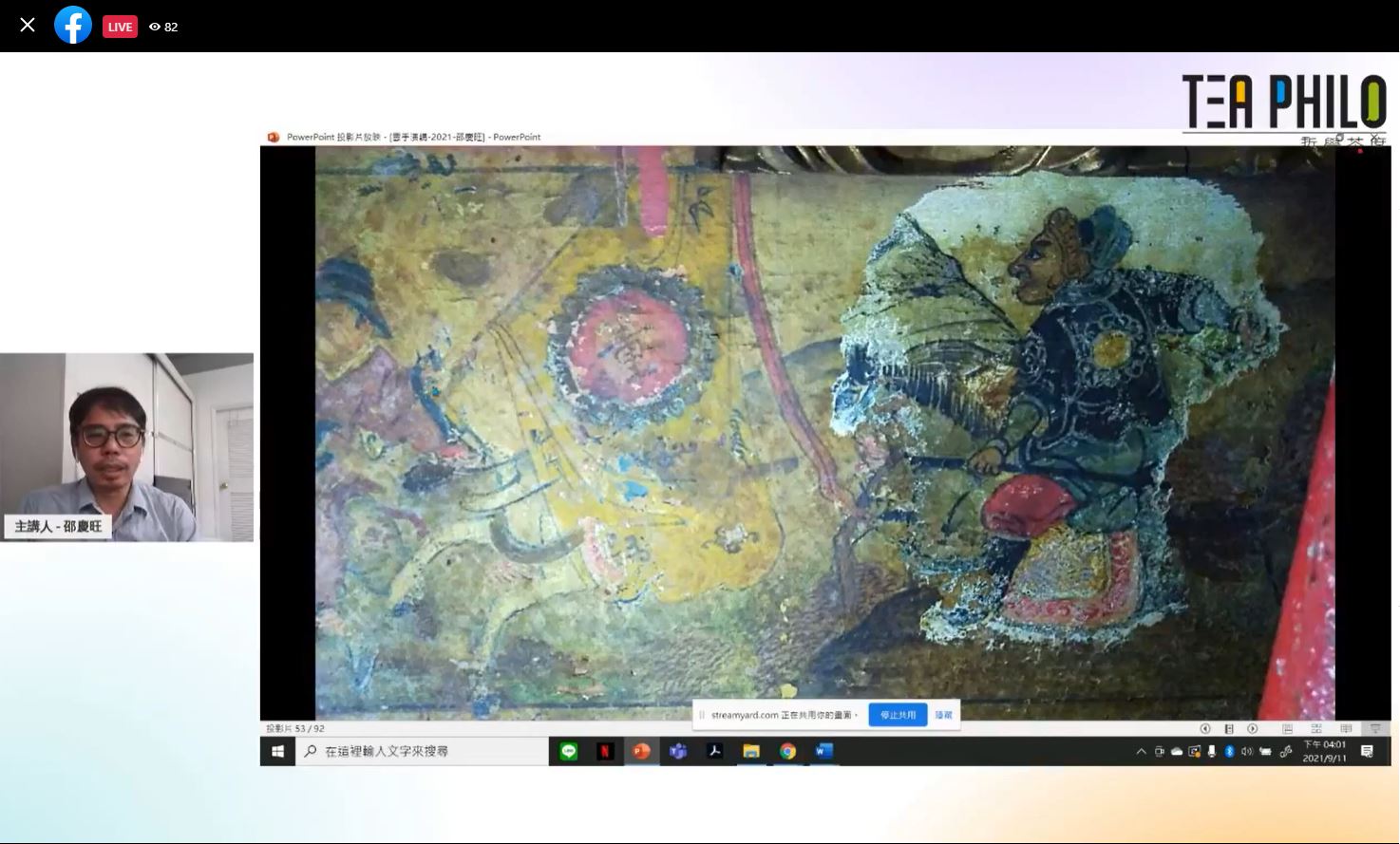Tea Philo 2021
Guarding the Common Cultural Language: linking Taiwan and Malaysia with traditional architectural painting
【Tea Philo】49
Guest Speaker:
Shao, Ching-Wang
Speaker Bio:
In the past, Shao have been engaged in the preservation of cultural assets in Taiwan for 23 years. He once worked as a field archaeologist at the Institute of History and Language of the Academia Sinica, Taiwan, and then at the Cultural Heritage Preservation Research Center under the Cultural Heritage Bureau of the Ministry of Culture, where he was engaged in the science of cultural relic conservation. Investigation and restoration. Later, transferred to university education in 2014. He taught at the Institute of Museum Studies and Antiquities Conservation, National Tainan University of the Arts, and concurrently served as the director of the Asia-Pacific Cultural Assets Research Center. In 2019, Transfer to National Taiwan University of Arts for historic art restoration. He teaches in the Department of Education and concurrently serves as the director of the Cultural Relics Conservation and Research Center. In 2019, the Ministry of Culture went to Boon San Tong Khoo Kongsi, Penang, Malaysia to carry out the Traditional painting conservation technology export and talent cultivation plan.
Theme of Discussion:
Guarding the Common Cultural Language: linking Taiwan and Malaysia with traditional architectural painting
Summary:
Organised by the Taipei Economic & Cultural Office in Malaysia and produced by INXO Arts & Culture (L) Foundation, Tea Philo is a series of sharing sessions revolving around the discussion of philosophies and humanities. Luminaries from Taiwan are invited to share their experiences and engage with the Malaysian audience to encourage cultural exchange.
The latest Tea Philo E-talk titled “Guarding the Common Cultural Language: linking Taiwan and Malaysia with traditional architectural painting” features Shao Ching-Wang, Assistant Professor of the Department of Architecture Art Conservation, National Taiwan University of Arts and director of Cultural Relics Conservation and Research Center. The E-Talk was broadcast through Tea Philo’s Facebook page from 3pm-5pm on 11th September 2021 (Saturday) and was moderated by Koh Doh Tat, founder of YYG Studio and practitioner of museum administration and arts marketing.
Shao Ching-Wang has been engaged in the conservation and restoration of cultural assets in Taiwan for 23 years. He once worked as a field archaeologist at the Institute of History and Language of the Academia Sinica, Taiwan, and then at the Cultural Heritage Preservation Research Center under the Cultural Heritage Bureau of the Ministry of Culture, where he was engaged in the science of cultural relic conservation. Investigation and restoration. Later, transferred to university education in 2014. Shao has also taught at the Institute of Museum Studies and Antiquities Conservation, Tainan National University of the Arts, and concurrently served as the director of the Asia-Pacific Cultural Assets Research Center. In 2019, he transferred to National Taiwan University of Arts to teach at the Department of Architecture Art Conservation and is also the director of the Cultural Relics Conservation and Research Center.
In 2019, with the support of Boon San Tong Khoo Kongsi (文山堂邱公司) and the George Town World Heritage Incorporated, the Bureau of Cultural Heritage of Taiwan organised an international cultural project, sending conservators including Shao to Penang to conserve and restore the traditional architectural paintings at Boon San Tong Khoo Kongsi. Tainan National University of the Arts and conservation teams from Taiwan researched and proposed reconstruction plans, then worked on-site at Boon San Tong to restore the paintings.
“When we talk about cultural assets, most people instinctively think of artworks or artifacts displayed in museums and art galleries. We realised that there is still a lot of work to be done on the conservation of folk religious artifacts, especially after the 921 earthquake,” shared Shao.
Taiwan has started developing modern technology, equipment and expertise since 1980 for the conservation and restoration of traditional architectural paintings and decorative art, as well as making sure traditional handicraft techniques are passed down to future generations. Shao believes that mutual learning and cultural exchange can occur when technologies, findings and challenges are shared among conservators from different regions and countries.
“After investigating, we found out that the paintings in the main hall of Boon San Tong were in serious conditions, with problems including severe salt damage, flaking, discolouration, missing parts, being covered in unknown substance, and cracks,” said Shao. The project of restoration was hence decided to have four stages: cleaning, reinforcing, filling in, and recolouring.
The project took the team 572 working days to complete. Workshops and internship programs on painting restoration principles and technologies were also conducted by the professional conservators to involve local cultural conservation students and practitioners.
Shao emphasised that preserving and restoring folk religious artifacts is different from working in a museum or lab, since folk religious artifacts still have actual functions and meanings for their respective local communities. “Context matters. Afterall, it is the community that has the strongest connection with their space and objects, and we should respect it.” concluded Shao.
Host:
Koh Doh Tat (Founder of YYG Studio and Practitioner of Museum Administration and Arts Marketing)
Date:
11th September 2021 (SAT)
Time:
3pm-5pm






